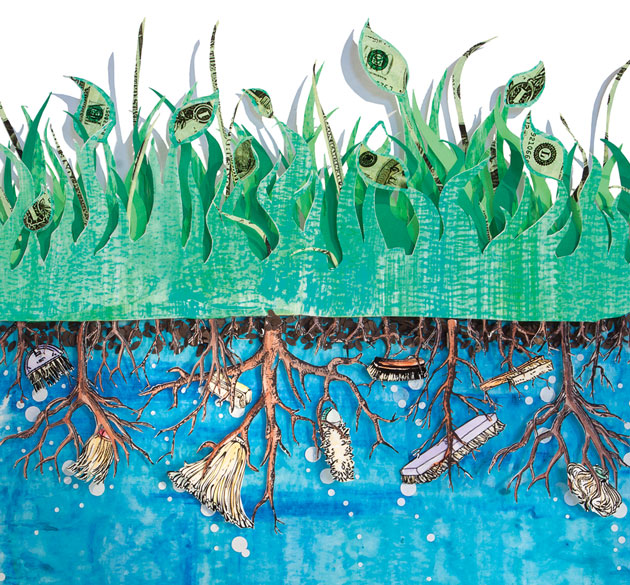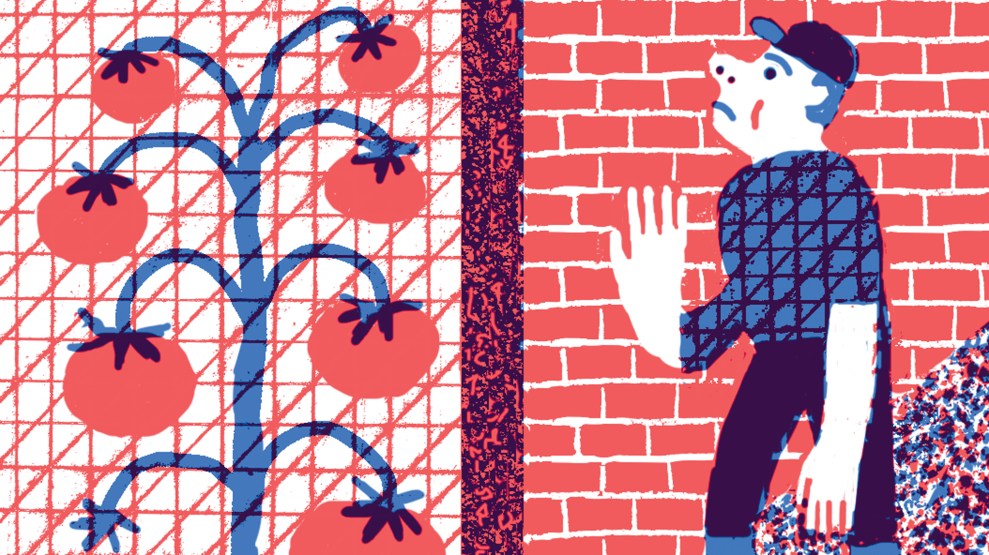
If you pay state taxes in Maryland, you fund a program that gives farmers as much as $90 per acre—$22,500 annually for a typical corn operation—to plant a crop that’s not even intended for harvest. This absurd-sounding initiative cost the state’s coffers a cool $24 million in 2015.
Yet I come not to expose a government boondoggle, but to praise an effort crucial to saving our most valuable fisheries. Let me explain.
Every summer, an algal bloom stretches along the Chesapeake Bay, the most productive estuary in the continental United States. As the algae dies, it sucks oxygen from the water, suffocating or driving away marine life. Cleaning up the dead zones would lead to more productive fisheries, increased tourism, and higher property values—benefits that would total $22 billion per year, according to the Chesapeake Bay Foundation.
What drives the algal blooms is what makes corn grow tall: nitrogen. The corn that farmers plant sucks up 50 percent or less of the nitrogen in the fertilizer they apply in the spring. But come harvest, there are no plants to absorb the excess, and so it leaches into streams and runs off into the bay—where it fertilizes a bumper crop of algae.
By paying farmers to plant a winter-hardy crop like rye right after corn is harvested in the fall, Maryland is trying to solve that problem. The rye absorbs the excess nitrogen and is typically harvested in the spring—before it matures into an actual grain crop—to make way for corn and soybeans. The chaff is either tilled under or left as is; when farmers plant into it, the dead vegetation crowds out weeds.
The program owes its origins largely to a 1998 University of Maryland study that showed planting rye after corn reduced nitrate leaching by about 80 percent. When cover crops were used for seven straight seasons, the researchers found, the nitrate levels in the water table dropped by 50 percent or more. Now, more than half of all corn and soybean acres in Maryland are covered in the winter, keeping 3.4 million pounds of nitrogen out of the Chesapeake Bay.
Hundreds of miles to the west, clean-water advocates looked at Maryland’s success with envy. In Iowa, by far the nation’s No. 1 corn-producing state, nitrogen doesn’t just threaten oysters. Runoff finds its way into wells and municipal drinking-water systems—and has been linked to birth defects, blood disorders, ovarian cancer, and thyroid problems. But the ill effects don’t end there. After it wreaks havoc in Iowa, the excess fertilizer heads downstream into the Mississippi, where it helps fuel an annual dead zone in the Gulf of Mexico that this year is the size of New Jersey, the largest ever recorded. That’s a major threat to a fishing area that’s more productive than the Chesapeake Bay.
Yet Iowa’s incentive program is much less generous than Maryland’s—it pays just $25 per acre, and sometimes only for the first year of planting. A recent analysis of satellite data by the Environmental Working Group (EWG) and the Practical Farmers of Iowa found that roughly 600,000 acres, or 2.6 percent of the state’s corn and soybean fields, had cover crops over the 2015-16 winter. To make a significant impact on nitrate pollution, Iowa needs to cover 12.6 million acres.
That’s a daunting goal, but Sarah Carlson, a co-author of the study, notes that cover-crop acreage has grown dramatically since 2009. And nitrate levels in drinking-water systems like Des Moines’ have gotten so dire—inspiring a fierce, ongoing public battle between the city’s water utility and the state’s Big Ag-aligned politicians—that the “Legislature in Iowa is getting serious about funding cover crops,” she says.
Sure, taxpayers will have to foot at least part of the bill. But we’re already underwriting the uncovered agriculture now fouling up drinking water and the Gulf of Mexico: The federal government doles out $1 billion annually to support Iowa farmers’ current practices, whereas the cover-crop program gets a total of just $10.6 million per year.
At the current level of funding, Iowa farmland won’t reach the crucial milestone of 12.6 million acres under cover crops until sometime in the 2090s, the satellite-data study found. To speed up the process, one of the paper’s co-authors, the EWG’s Soren Rundquist, suggests a bit of budget jiujitsu: shift a tenth of that federal cash now heading into Iowa, $100 million annually, into paying farmers to plant covers. Within a decade, he calculates, they’d reach and maintain the target level. “It’s just practical,” Rundquist says. “If we can afford to spend $1 billion supporting corn and soybeans, we can spend a fraction of that to support the environment and the people who depend on it.”
















